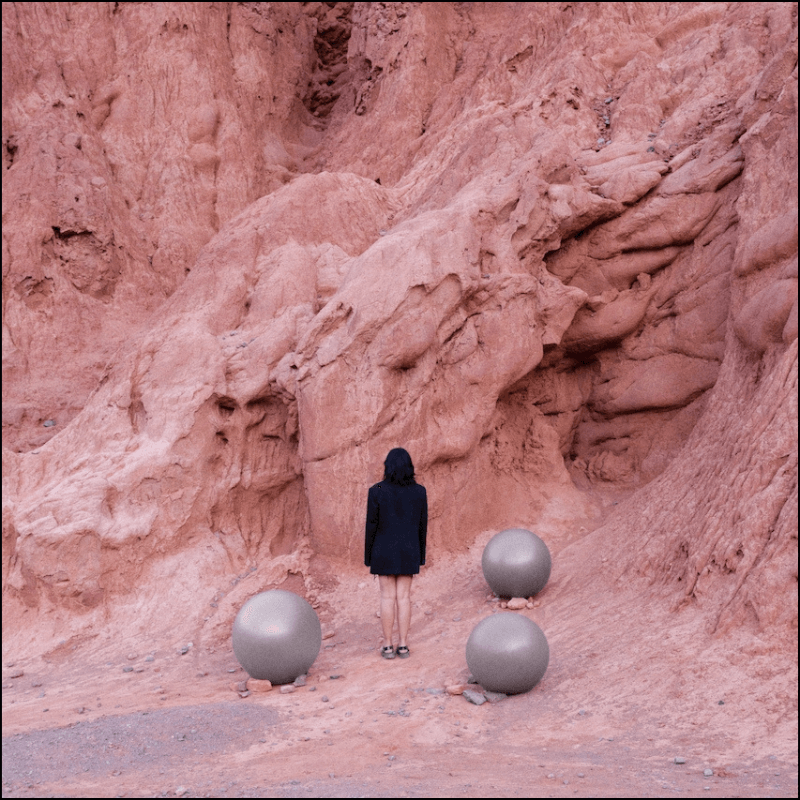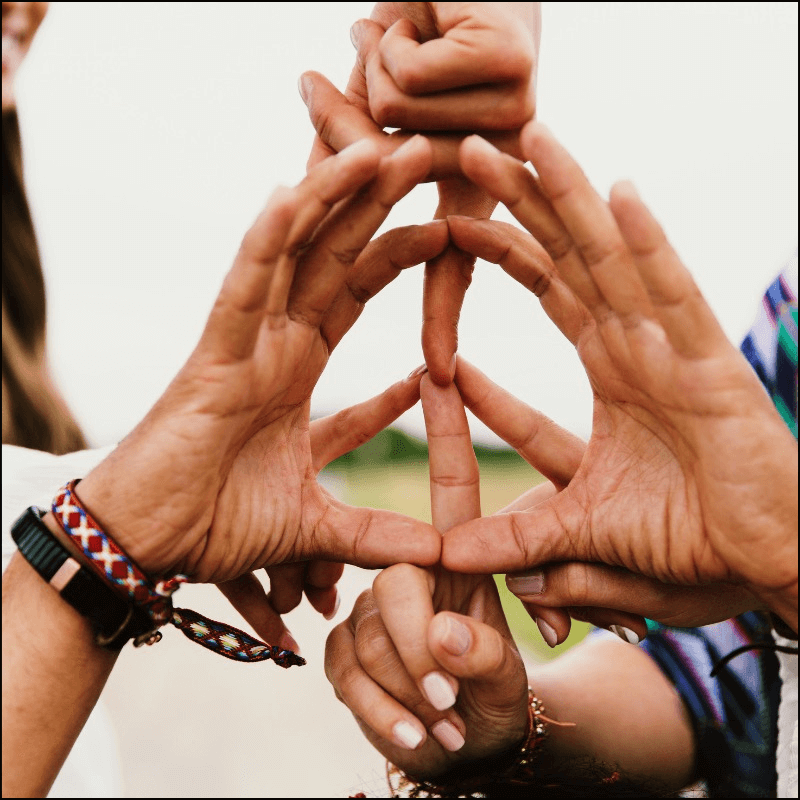Artisan Clothing: Ethical and Sustainable Fashion
Artisan clothing is one of those buzzwords, that everyone uses, but no one seems to know exactly what it is. It is often pigeonholed as “handmade.” But, in reality, everything in fashion is hand made – because, there is no automatic t-shirt machine. All clothes are sewn at a sewing machine by real people by hand. So, what exactly is artisan fashion? And does it really create more ethical and sustainable supply chains? I am going to explain all of that in this artisan fashion article.
BUT BEFORE WE START
Have you heard about the super secret document that everyone in the fashion industry uses, but no one is talking about? Probably not. That is because you can't find it on Google or Instagram (believe me, I've tried).
It's a form I have used for over 13 years at every job I have ever had. Literally everyone from brands to fabric suppliers, use it, but you can't find it anywhere publicly.
The best part? It can cut your sourcing time in half, and save you tons of money in product development! This is the kind of info consultants charge the big bucks for. And, I'm giving it away for free until the end of the month.
So, get ready to make fashion startup life a whole lot easier, and GRAB YOUR FREE DOWNLOAD OF THE NOT SO SECRET SOURCING DOC HERE
WHAT YOU WILL LEARN
- What is artisan clothing?
- Pros of artisan fashion
- Is artisan clothing sustainable and ethical?
- Can artisan fashion scale?
- Examples of artisan clothing techniques
- Block printing
- Shibori
- Embroidery and beading
- Lace
- Crochet and knitting
- Rug making
- Some of my favorite artisan fashion brands for a little inspiration
- Where to find artisan suppliers
WHAT IS ARTISAN CLOTHING?

Image from Studio Tia
Artisan clothing is basically the complete opposite of fast fashion. And, it is often confused with fair trade. But, they are not the same. That is because, fair trade is an actual certification, while artisan is a loser term. There technically is not official definition of artisan fashion. But, for me, for something to be artisan, it needs to check three boxes.
1: IS IT HANDMADE?
I know I said that all fashion is technically handcrafted. But, today, thanks to technology, a lot of practices and jobs have been automated by machines.
For something to be artisan, it must be handmade clothing, with limited development from machines.
Here’s an example, remember how I mentioned that all clothes are made on sewing machines by hand? For a garment to be artisan, it would need to be made without the sewing machine and just a person stitching by hand.
See the difference?
Now stitching a garment by hand, without a sewing machine, is a very difficult and labor intensive process. For that reason, many brands will pick and choose different artisan components in their designs.
It gets a little confusing, but, here's and example.
So, on a machine sewn shirt, they might add some artisan hand embroidery.
For me, for something to be artisan fashion, the whole thing does not have to be fully artisinal, but it should incorporate some handmade artisan techniques.
2: IS IT LOCAL?
Artisan clothing is the opposite of global modern supply chain. All components should be local.
Here is another example. For that same shirt we were just talking about to be truly artisan-made, the fabric should be woven or knit locally, and it should be dyed locally as well.
So for this shirt example, if were making it in India. I would probably opt for organic cotton, which is local to the country, instead of linen which suppliers need to import from China or Belgium.
Basically, the components (or ingredients) that make up the garment should not be traveling from all over the world; they should come from what is available regionally.
3: DOES IT HAVE A HISTORY?
Artisan fashion should tell a story about culture. The craftsmanship should have roots.
So, let's talk about that same artisan shirt. Yea, technically, a bright rainbow tie dye shirt is made by hand (think like The Grateful Dead kind) – but tie dye techniques like this have nothing to do with the region.
If we really wanted to make an artisan shirt with a tie-dye effect, we would use Bandhani (I’ll share more about this technique soon), which is a traditional Indian tie-dye technique.
DO YOU SEE THE DIFFERENCE?
Artisan clothing is so much more than crafts. It’s a local, cultural movement.
ARTISAN VS COUTURE
Now that you understand what artisan fashion is, let’s talk about couture fashion.
In contrast, couture fashion is luxury fashion that’s custom-made for a client using high-quality materials and design techniques. The word itself—Couture--comes from the French word for sewing; couture designers often create custom gowns for well-known clients such as actors and models.
Oftentimes in the world of couture fashion, specific measurements are taken of the person who will wear the gown, to be sure the custom-made garment is tailored to perfectly fit their body.
Generally, artisan clothing is not made for an individual, and it can be mass-produced.
But, here's the thing, many of the handmade, high attention-to-detail components we see in couture are also in artisan clothes.
And, while all artisans are highly skilled, they are not all at the level of skill that a couture person is.
PROS OF ARTISAN CLOTHING

Image from Muzungusi Sisters
You know I love it. Here’s why you should too.
ONE OF A KIND
(Without the price tag.)
Think about your favorite article of clothing. I’ll give you a minute.
I bet whatever you just envisioned has some sort of an emotional connection to you. Maybe it was the outfit you met your significant other in, maybe it’s your lucky jersey, or maybe it’s a hand me down from your grandmother.
While I have no idea what you thought of, I am willing to bet it made you feel something.
Items that cannot be purchased just “anywhere” make you feel pretty darn good when you wear them. They’re unique.
Artisan clothing is similar. With artisan fashion, you are wearing something few people own.
It’s special.
While artisanal clothing can technically be mass-produced, (I’ll get more into that later) because each piece is really being made by hand, they are all a little bit different.
PRESERVES CULTURES AND CREATES JOBS
I already mentioned that to be artisanal fashion, the techniques, and materials must have strong roots in the local culture.
The sad thing is that in many places, these traditions are dying. Younger generations no longer want to do the jobs their parents have done for generations and want new opportunities. They want to get jobs in cities and work in office buildings. They aspire to be working that 9-5 corporate grind, or to become TikTok famous.
I have met with artisans from India to Italy. And the story is always the same. They are desperate for young hands to take over the traditions.
One of the biggest reasons why younger people do not want these jobs is because they don’t believe there is a future in them.
For decades machines have been taking over the fashion industry, and artisans have found it hard and harder to find new brands to take on as clients.
Thankfully with the rising popularity of sustainable and ethical fashion, more brands are becoming interested in reviving these techniques, so in recent years business has actually been quite good for many artisans, including female artisans.
But, if the trend of conscious fashion dies, so will these craftspeople's livelihoods.
JOB CREATION
A lot of artisan work is done in remote villages. And, this is important. Because in many countries, it is difficult, if not impossible, to find work.
It is not uncommon for husbands and adult children to leave their home, go to larger cities, find work, and send money back to their families in the villages.
It’s a hard and lonely life.
With artisan-made fashion, we are seeing jobs return to villages. People are able to work and stay at home with their families. And, IMO, this is of the most important benefits of artisanal work - improving people's quality of life.
HIGHLY SKILLED WORKERS
Artisans begin training when they are children. And, no - it’s not child labor.
Think of it this way. Famous authors started learning how to read and write when they were five. Doctors started learning about biology in middle school.
Just like a white color job, training for artisan skills starts at a young age. Because many of these crafts use complex techniques it can take years to learn, and decades to perfect.
And, let me be clear. Starting to learn a technical skill from a young age is not the same as working in a factory.
Because of their lifelong training, artisans tend to have extremely high skill sets and can work with almost machine-like procession.
Now, like anything of course, there are people who aren’t so great at their jobs. But, in general, when you work with artisans, they are going to be able to produce a very high-quality product because of all of their years of practice.
ARTISAN CLOTHING AND SUSTAINABILITY

Image from Caravana
Generally, artisan made products help to reduce manufacturing carbon footprints.
Artisans usually do not use machinery that gobbles up electricity, and they tend to stay away from processes that emit dangerous toxins into the air, opting for more natural techniques.
One of my favorite examples of this is khadi fabric. And, if you know me, you know I love it.
Khadi is a hand-spun and hand-woven fabric from India. It has been estimated that the fashion industry uses over 132 tons of coal for fabric weaving alone. Khadi manufacturing uses none, because everything in the supply chain is done by hand. Even the cotton picking uses people instead of machines.
MASS PRODUCTION IS POSSIBLE

Image from Caravana
Yes, you can scale while still working with artisans. And, hear me out, this is a good thing.
There are currently more artisans than orders. Meaning, a lot of artisans are hoping for work.
The bigger orders brands can provide, the more people they can help employ.
What brands usually do is they will start with one artisan group (also called clusters). And, when that group has reached its max and can’t take on any new orders because they are too busy, they will then find other communities to start working with.
One of the best examples of artisan craft at scale is Build A Nest. Build A Nest works to connect big brands like West Elm, Patagonia, and even Tory Burch to help them meet and work with artisans from all over the world. They even help small startup brands too!
A FEW OF MY FAVORITE ARTISAN TECHNIQUES

Image from Lemlem
BLOCK PRINTING
Block printing involves printing on textiles using carved wooden blocks. The block is dipped in ink, and stamped directly onto the fabric or paper to create a design. You can check out the block print process here.
And, watch me doing my own block printing in Jaipur here!
TIE DYE
SHABORI: This is a traditional, Japanese dyeing technique in which patterns are created on fabric via binding, compressing, and twisting the material before the dye is applied. The dye then seeps into the fabric in different areas, creating unique designs.
Traditionally indigo dye is used, but today shibori techniques are used for other types of dyes as well.
BANDHANI: Is the Indian version of Shibori. But, instead of binding with blocks and other tools, the fabric is twisted and tied with small pieces of string.
EMBROIDERY AND BEADING
This is an intricate art form in which designs are hand stitched into the fabric, using a needle and thread. The process is extremely time-consuming.
Beads can also be added to the technique to create more elaborate and textured designs.
LACE MAKING
This dates back to Europe in the 17th and 18th centuries; it’s an art form greatly appreciated for its intricacy.
Did you know that lace-making is basically embroidery? Threads are stitched into a special fabric, the fabric backing is then dissolved, and you are left with only the stitches - this is lace.
KNITTING AND WEAVING
As I mentioned earlier, weaving can be done by hand, like in the case of khadi fabric. And, also knitting can be artisan as well. Today most sweaters are made by machines that are programmed and literally spit a full sweater out (it’s kind of like the Jetsons). But there are many artisan groups who are still knitting sweaters with two needles and a ball of yarn.
IT’S ALL IN THE YARN
Machines will never be able to replicate hand woven and knit textiles, and that is because they literally can’t. Hand knitting and weaving yarns are actually different than machine yarns. So, try as technology might - it will never be the same.
And, by the way, hand-made textiles tend to have a much softer, and cozy feeling.
SOME OF MY FAVORITE ARTISAN CLOTHING BRANDS

Image from Symbology
Here are a few artisan brands you should definitely check out for artisan inspiration, or shop. They are great to look at because, in my opinion, they are taking old manufacturing techniques, and mixing them with modern designs.
- Caravana - this brand is serious Tulum vibes, and uses local Mexican artisans for their textiles
- Studio Tia - partners with Indian artisans to create ethical boho pieces at affordable prices.
- Symbology - Inclusive easy to style pieces, with an emphasis on working with women artisans
- Mezungu Sisters - an independent, women owned brand that uses artisan groups from all over the world to create modern luxury clothes that tell a story
- Lemlem - hand woven Ethiopian textiles, with garments sewn all over Africa
WHERE TO FIND ARTISAN CLOTHING SUPPLIERS

Image from Studio Tia
This can be tricky, because a lot of artisan groups are remote, and they aren’t very internet savvy. But, that’s ok - here are a few places to get a head start
- LOCAL NGO -
- I would start here with a simple Google search. Just type in the country you want to manufacture in + the technique you want + NGO. So, your search might look something like this Mexico fabric weaving NGO. Or, Indian embroidery NGO. You can even get specific with cities or regions. So instead of Mexico, you could search Oaxaca fabric weaving NGO.
- BUILD A NEST - I mentioned them earlier in this article, but they are worth mentioning again, to date they have access to the largest network of global artisans, and, get this, even though they work with huge brands, they are willing to help small startups partner with the perfect artisan community!
WHAT DO YOU THINK?
Do you look at artisan-made clothes differently now? Are you going to use artisan manufacturing techniques in your collection? Would you consider using artisans for other types of products, like accessories, jewelry, or bags?



Comments